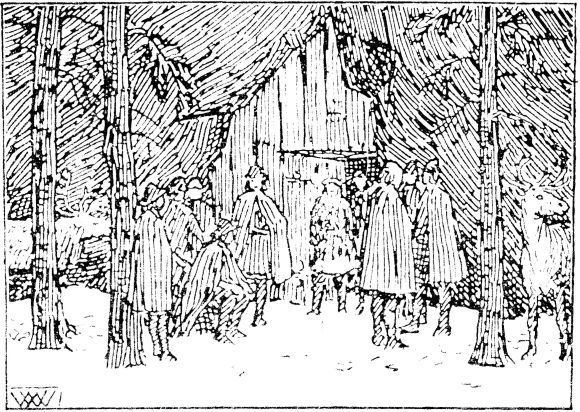Name Sigurd Slembe | Parents Magnus Barefoot | |
 | ||
Grandparents Henry IV, Holy Roman Emperor, Olaf III of Norway Great-grandparents Harald Hardrada, Henry III, Holy Roman Emperor, Agnes of Poitou, Tora Torbergsdatter Similar People Magnus Barefoot, Sigurd the Crusader, Olaf III of Norway, Henry IV - Holy Roman E, Inge the Elder | ||
Sigurd slembe
Sigurd Magnusson Slembe (or Slembedjakn) (died 12 November 1139) was a Norwegian pretender to the throne.
Contents

He was the subject of Sigurd Slembe, the historical drama written by the Norwegian playwright Bjørnstjerne Bjørnson in 1862.
Biography
Sigurd is commonly believed to have been born around 1100 in southern Norway and was said to have been raised by the priest Adalbrikt. His mother was apparently Thora Saxesdatter. Sigurd himself was consecrated to be a deacon. In Old Norse, his nickname slembi could be translated to mean "noisy", Slembidjákn would mean "noisy priest". Sigurd appeared before King Harald Gille claiming that he was an illegitimate son of the late King Magnus III of Norway. He demanded his putative half-brother King Harald Gille, whose origin actually was quite similar, share power with him as co-kings.
Sigurd married Audhild Torleiv, the daughter of Thorleif Maddadsson. Sigurd had himself proclaimed king in 1135, but his claim was not recognized by King Harald Gille. In 1136, Sigurd arranged for Harald Gille to be killed in his sleep. As soon as Harald was dead, Sigurd had the previous King Magnus IV of Norway, his putative nephew, reinstated as co-king. This was apparently in the hope of increased support and in order to secure his own position. Magnus had previously been imprisoned, blinded and mutilated by Harald. As Magnus was rather incapacitated, Sigurd claimed royal power in Magnus' name. However, Sigurd was convicted and outlawed for regicide.
Sigurd Slembe and Magnus continued to find little support in Norway. King Eric II of Denmark supported them for an unsuccessful campaign. On November 12, 1139, in the naval Battle of Holmengrå near Hvaler in Oslofjord, the Danish supported forces of Magnus and Sigurd were put against supporters of King Inge I of Norway, who was still a child. Magnus was killed in the battle, while Sigurd was captured and betrayed. Sigurd met his end in a brutal manner, tortured to death. His arms and calves were first crushed with axe-hammers, after which the skin on his head was cleaved, his back was flayed and his spine broken. He was thereafter hanged, decapitated and thrown into a scree of rocks.
Historical context
During the civil war period of Norwegian history (1130–1240), there were several interlocked conflicts of varying scale and intensity. The background for these conflicts were the unclear Norwegian succession laws, social conditions and the struggle between church and king. There were then two main parties, firstly known by varying names or no names at all, but finally condensed into parties of Bagler and Birkebeiner. The rallying point regularly was a royal son, who was set up as the head figure of the party in question, to oppose the rule of king from the contesting party.
